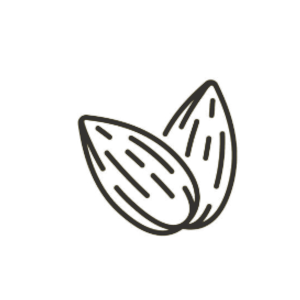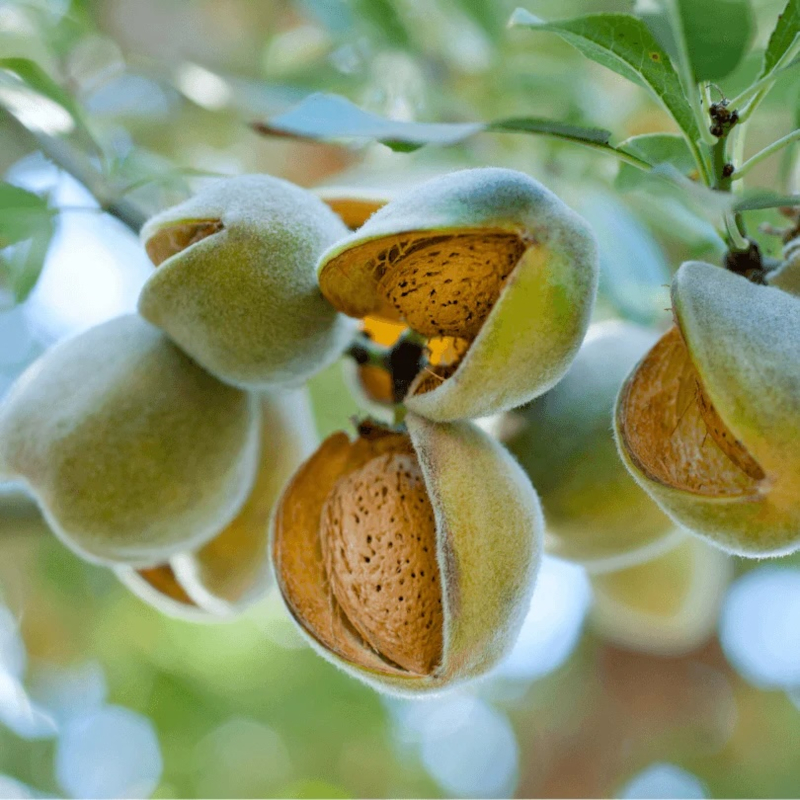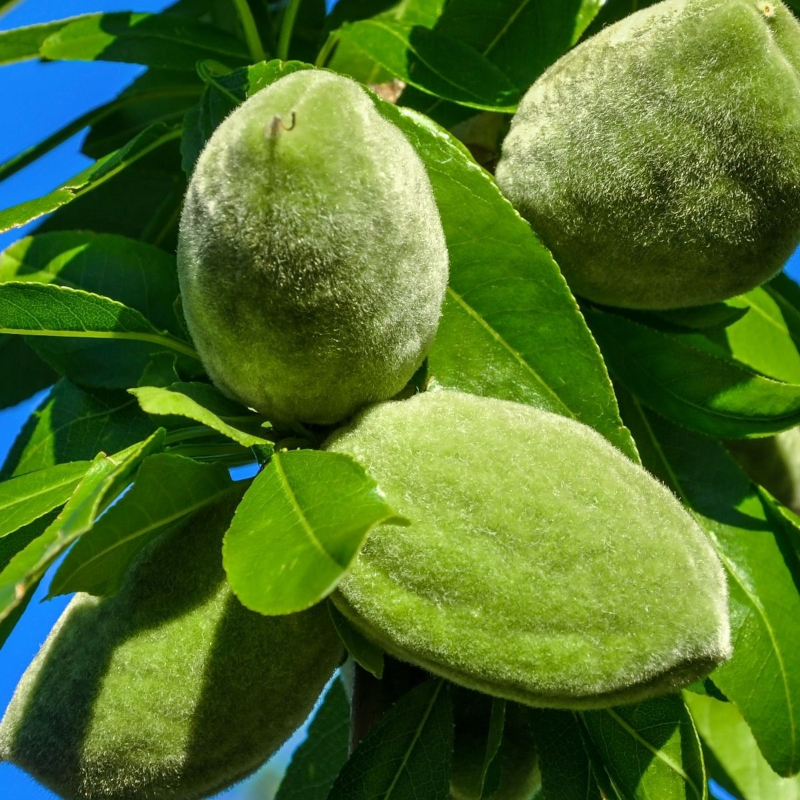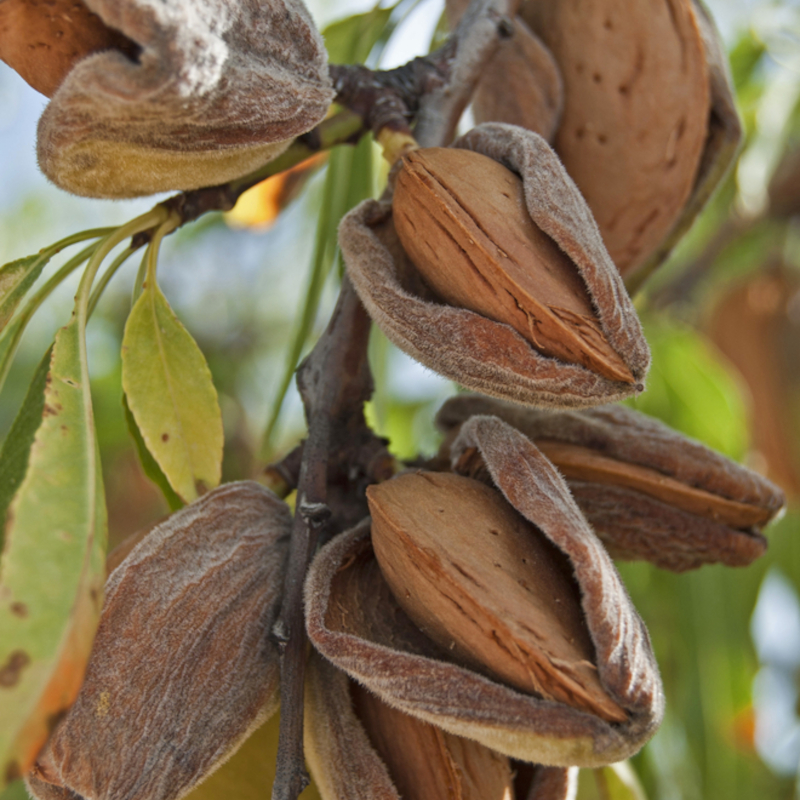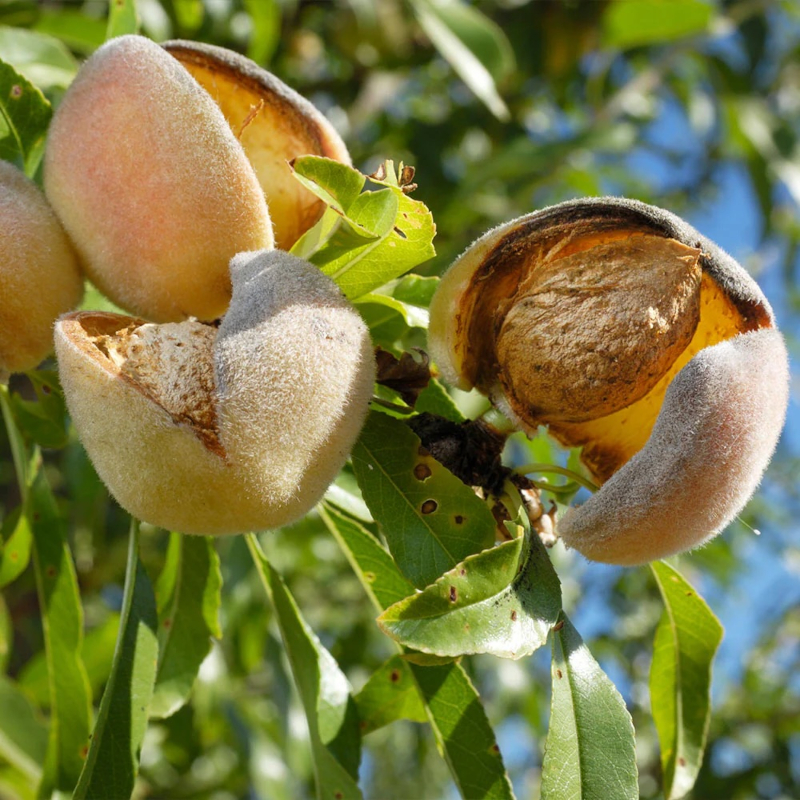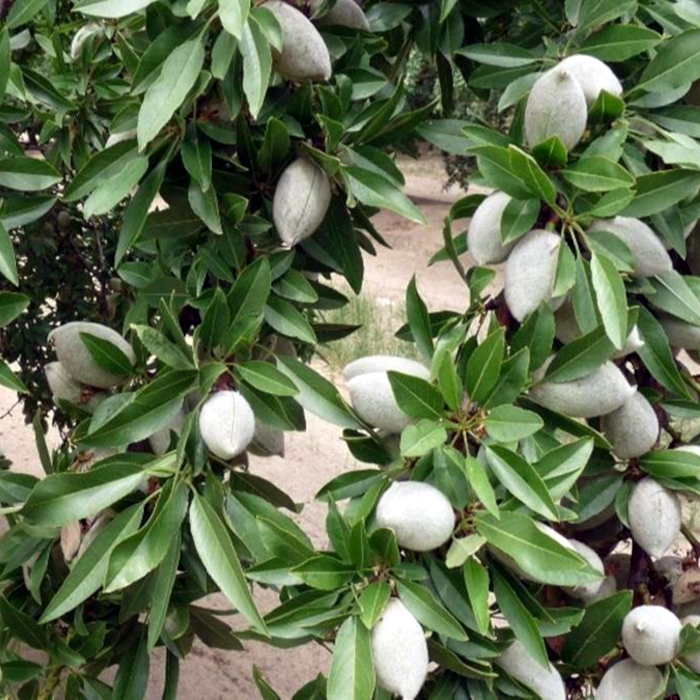How To
Grow
Almond Tree
Choose the right variety
Choose a variety that suits your climate and chill hour availability.
Common varieties: Nonpareil, Shalimar, IXL, Ne Plus Ultra.
Almonds are not self-pollinating; plant at least two compatible varieties for cross-pollination.
Select a good location
Temperature: Almond trees need hot, dry summers and mild, wet winters.
Chill Hours: Most varieties require 250–500 chill hours below 7°C (45°F) in winter.
Frost Sensitivity: Spring frost can damage blossoms, so avoid frost-prone areas.
Well-drained, loamy soil with pH between 6.0 and 7.0
Planting
Soil conditions: Type: Well-drained, loamy or sandy soils are best. pH: Slightly acidic to neutral (pH 6.0–7.5). Avoid waterlogged or heavy clay soils.
Time: Plant in late winter to early spring (after the risk of frost).
Spacing: Space trees 6–8 meters (20–26 ft) apart.
Planting depth: As deep as the nursery container or graft union above soil level.
Watering
Young trees need regular deep watering.
Mature trees are drought-tolerant but need water during nut formation.
Avoid overwatering—roots are sensitive to rot.
Fertilizing
Apply balanced fertilizer in spring (NPK 10-10-10).
Avoid excessive nitrogen—it encourages foliage over fruit.
Pruning
Prune during dormant season to shape the tree and improve airflow.
Remove suckers, dead or crowded branches.
Pollination
Almonds need bee activity for pollination.
Ensure the presence of pollinator-friendly flowers nearby.
Pest & disease management
Watch for: Aphids, mites, peach twig borer, leaf curl, and rust.
Use organic insecticides, neem oil, or integrated pest management (IPM).
Harvesting
Almonds are ready when hulls split open (usually late summer to early fall).
Shake the tree gently to drop nuts and dry them before storage.
Health Benefits of Almond
- High in monounsaturated fats which may reduce bad LDL cholesterol.
- Rich in antioxidants like vitamin E that protect arteries.
- Contains riboflavin and L-carnitine, nutrients linked to brain health.
- Vitamin E and antioxidants help maintain skin elasticity and protect from UV damage.
- High in protein and fiber, almonds can promote satiety and reduce hunger.
- Good source of calcium, magnesium, and phosphorus.
- Low in carbs and high in healthy fats, fiber, and protein—ideal for people with diabetes.
- Prebiotic fiber supports beneficial gut bacteria.
| Nutrient | Amount / Almond (28Gr) |
| Calories | 164 kcal |
| Protein | 6 g |
| Total Fat | 14 g |
| – Saturated Fat | 1.1 g |
| – Monounsaturated Fat | 9 g |
| – Polyunsaturated Fat | 3.5 g |
| Cholesterol | 0 mg |
| Sodium | 0.3 mg |
| Total Carbohydrates | 6.1 g |
| Vitamin E | 7.3 mg (49% DV) |
| Magnesium | 76 mg (6% DV) |
| Potassium | 208 mg (4% DV) |
| Phosphorus | 136 mg (11% DV) |
| Calcium | 76 mg (6% DV) |
| Iron | 1.1 mg (6% DV) |
| Riboflavin (B2) | 0.3 mg (25% DV) |
| • DV = Daily Value, based on a 2,000-calorie diet. | |
Various Uses of Almond
Eaten Raw / Roasted
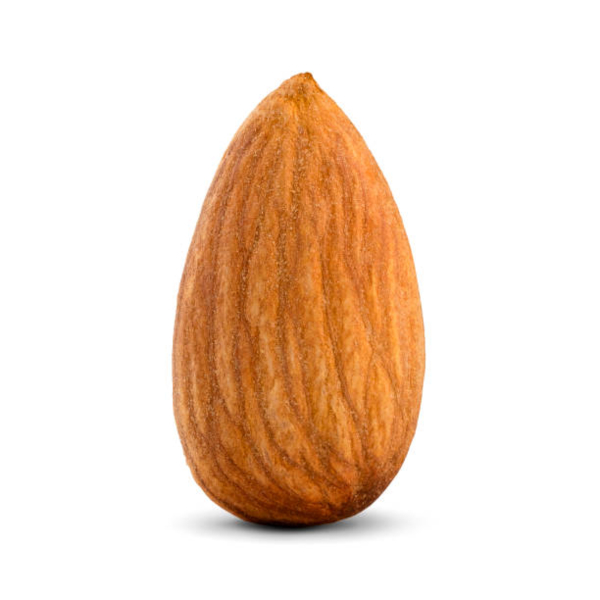
Common as a snack or in trail mixes
Butter & Milk
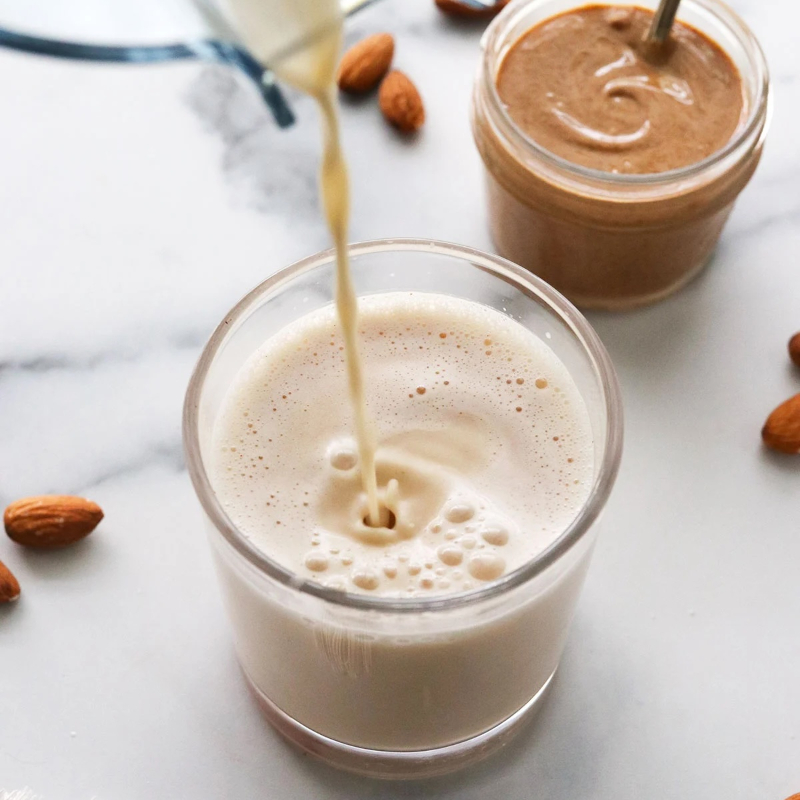
A healthy alternative to peanut butter; rich in protein and good fats.
Dairy-free milk substitute used in coffee, cereal, baking, or smoothies.
Baking & Cooking
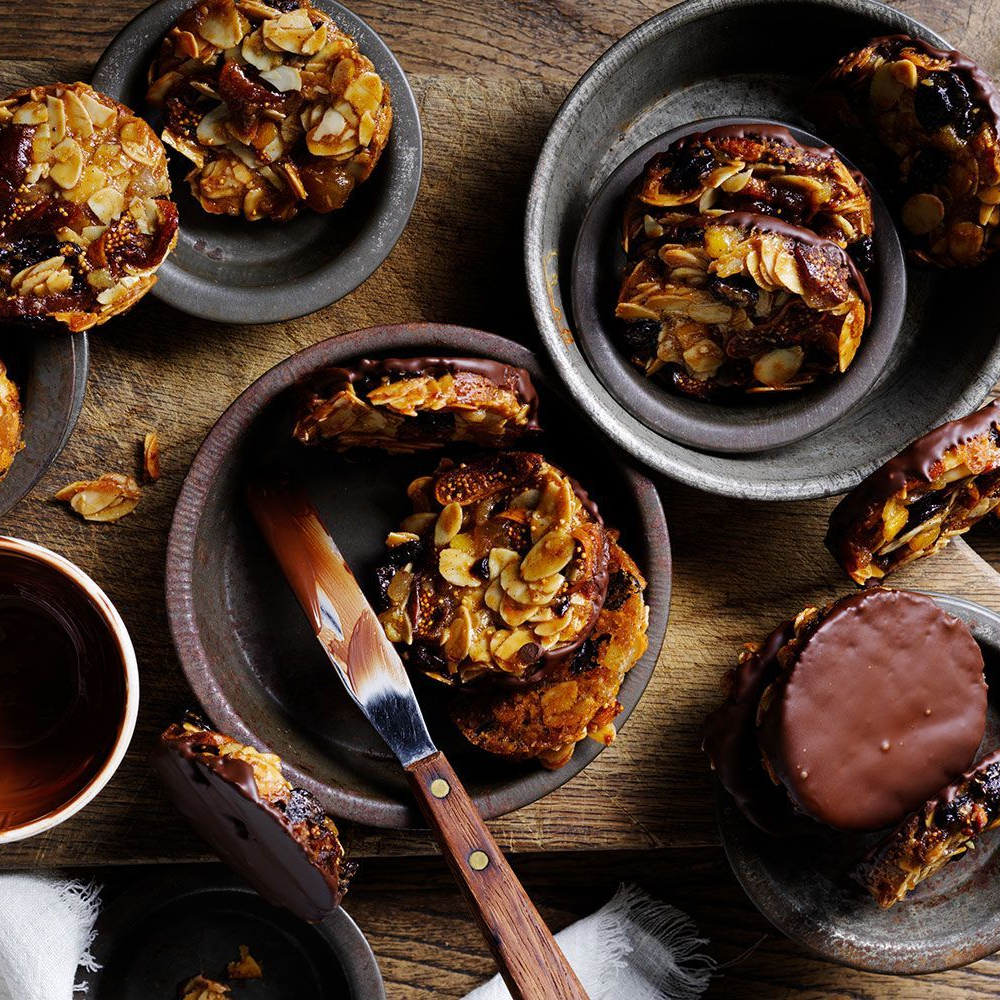
Used whole, sliced, or ground (almond flour) in cakes, cookies, pastries, and sauces.
Almond Flour / Meal
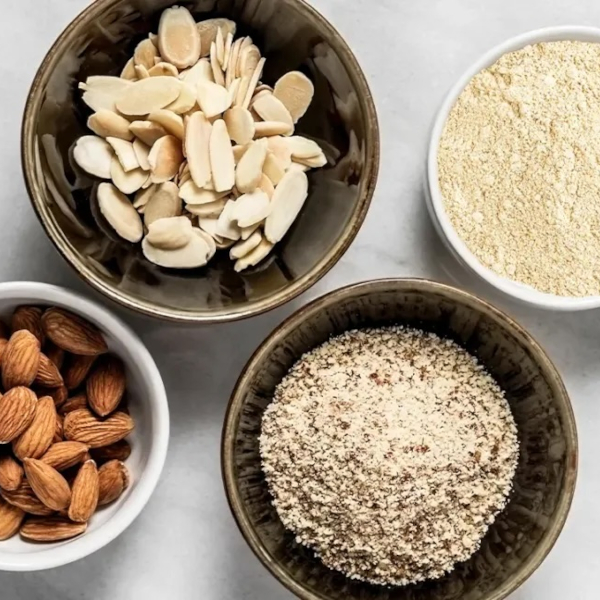
Gluten-free option for baking breads, muffins, and pancakes.
Desserts

Used in marzipan, nougat, halwa, and almond-based sweets.
Toppings: Sprinkled on salads, yogurt, porridge, oatmeal, or savory dishes.
Uses Of
Tree Trunk
Firewood
Almond wood is dense and hardwood, making it excellent for burning.
Produces high heat output and a pleasant aroma when burned.
Commonly used in wood-fired ovens and BBQs for grilling and smoking.
Woodworking & crafts
The wood is hard and fine-grained, useful for making small wooden items like handles, utensils, or decorative objects.
Not commonly used for large-scale carpentry due to tree size and availability.
Smoking Wood for Food
Almond wood gives a mild, sweet, nutty smoke flavor—ideal for smoking meats, especially poultry, pork, and fish.
An alternative to fruitwoods like apple or cherry.
Charcoal
Can be turned into charcoal for natural, chemical-free grilling.


